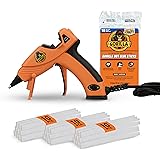In today’s fast-paced world, parents and caregivers are constantly seeking innovative and engaging ways to entertain children, especially when screen time becomes a concern. The challenge often lies in finding activities that are both stimulating and budget-friendly, tapping into a child’s natural curiosity and creativity. This is where the magic of homemade projects comes alive. As the video above wonderfully demonstrates, transforming everyday items into exciting games and toys is not only achievable but incredibly rewarding for both kids and adults.
Creating your own DIY games and toys for kids provides a unique opportunity to foster imagination, problem-solving skills, and fine motor development. It moves beyond passive consumption, encouraging active participation and a sense of accomplishment. Let’s dive deeper into some fantastic ideas that expand on the quick glimpses from the video, offering practical tips and the educational benefits behind these simple yet impactful projects.
Embrace Repurposing: Crafting Engaging Homemade Toys
One of the most valuable lessons DIY crafts teach children is the concept of repurposing. Taking something old or seemingly useless and giving it new life sparks creativity and promotes environmental awareness. The video briefly showcases an “Office Basketball” game, a prime example of turning mundane office supplies into an exciting challenge.
1. **Office Basketball & Beyond:** The idea of using an office wastebasket and paper balls for a quick game of basketball is brilliant in its simplicity. You can expand on this by challenging children to find other “courts” or “hoops” around the house. A laundry basket makes a great target for beanbags made from old socks and rice. Cardboard boxes can be cut and decorated to create target practice games, where points are awarded for different openings. This not only encourages physical activity but also helps children understand basic physics like trajectory and force.
2. **Imaginative Play Props:** The “Camera Made from a Match Box” shown in the video is a wonderful prop for imaginative role-play. Children love to mimic adults, and a handmade camera allows them to explore photography without screens. You can take this further by creating other props like a “Home-Made Light Sword” using colored cellophane and laminating film, as suggested. These items fuel storytelling and character development. Consider adding other simple props like cardboard binoculars for a safari adventure or a “walkie-talkie” from two tin cans and a string for secret missions.
Fostering Physicality and Fun: Creative Kids’ Activities
Active play is crucial for a child’s development, supporting gross motor skills, coordination, and overall physical health. Many DIY projects naturally lend themselves to energetic activities that get kids moving.
3. **Homemade Obstacle Courses:** The video mentions a “Homemade Obstacle Course,” a fantastic way to burn energy and build confidence. You don’t need elaborate equipment. Pillows, blankets, chairs, tunnels made from old boxes, and even painters’ tape on the floor can create a challenging and fun course. Encourage children to help design and set up the course. This involves spatial reasoning and planning. Time them as they navigate it, or introduce playful rules like “crawl under this,” “hop over that,” to vary the movements and keep them engaged.
4. **Minute to Get a Nut Challenges:** The “1 Minute to Get a Nut” challenge is a clever way to introduce timed tasks and problem-solving. This concept can be adapted endlessly. Give children a minute to stack a tower of blocks as high as possible, sort toys by color, or collect a certain number of small items. These quick bursts of activity enhance focus, agility, and competitive spirit in a lighthearted way. Always prioritize safety and ensure the “nut” or challenge item is age-appropriate and not a choking hazard.
Sensory Exploration & Simple DIY Projects
Sensory play is fundamental for early childhood development, helping children understand the world around them through touch, sight, and sound. DIY projects offer safe and inexpensive ways to create rich sensory experiences.
5. **A Fun Bubble Maker & DIY Bubble Machine:** Bubbles are universally loved, and the video provides recipes for both a “Fun Bubble Maker” (sticks, water, dish soap, glycerin) and a “DIY Bubble Machine” (water, washing up liquid, sugar). Let’s expand on these. The glycerin in the first recipe helps create stronger, longer-lasting bubbles. Sugar in the second recipe also adds to the bubble solution’s elasticity. Experiment with different sized wands made from pipe cleaners, cookie cutters, or even cut-out plastic bottles. You can add food coloring to the solution for colored bubbles (just be mindful of potential staining). Bubbles offer a wonderful opportunity for observing scientific principles like surface tension and light refraction, all while having delightful fun.
6. **Easy Spinners:** The video highlights “Easy Spinner” crafts. Simple spinners can be made from cardboard cut into circles, decorated, and then threaded with string or attached to a pencil for spinning. These are excellent for developing fine motor skills and understanding centrifugal force in a playful manner. Children can experiment with different weights, shapes, and sizes of spinners to see how they affect the spinning motion and duration.
Beyond the Craft: The Benefits of Hands-On Creation
Engaging in these types of DIY games and toys for kids offers far more than just a temporary distraction. It provides a foundation for crucial developmental milestones.
1. **Enhancing Creativity and Imagination:** When children create their own toys, they are actively imagining possibilities, designing solutions, and bringing their ideas to life. This process is invaluable for fostering intrinsic creativity, a skill that extends into all areas of learning and life.
2. **Developing Problem-Solving Skills:** Every DIY project presents mini-challenges. How do I make this stick together? What materials work best? These questions encourage children to think critically, experiment, and learn from trial and error, building resilience and ingenuity.
3. **Boosting Fine Motor Skills:** Cutting, gluing, drawing, tying, and manipulating small parts are all integral to many DIY crafts. These actions significantly enhance fine motor coordination, which is essential for writing, dressing, and many other daily tasks.
4. **Promoting Family Bonding:** DIY projects are often collaborative efforts, providing precious opportunities for parents and children to work together, communicate, and share a sense of accomplishment. These shared experiences create lasting memories and strengthen family ties.
5. **Encouraging Sustainable Practices:** By using recycled materials or items found around the house, children learn about resourcefulness and the importance of reducing waste. This early exposure to sustainable practices can instill valuable environmental awareness.
These simple yet effective ideas, inspired by the video’s quick crafts, demonstrate that keeping children happily engaged doesn’t require expensive gadgets or elaborate setups. Instead, it thrives on creativity, readily available materials, and a willingness to explore the boundless potential of homemade entertainment. Dive into these projects and watch your children light up with the joy of creating their very own DIY games and toys for kids.







